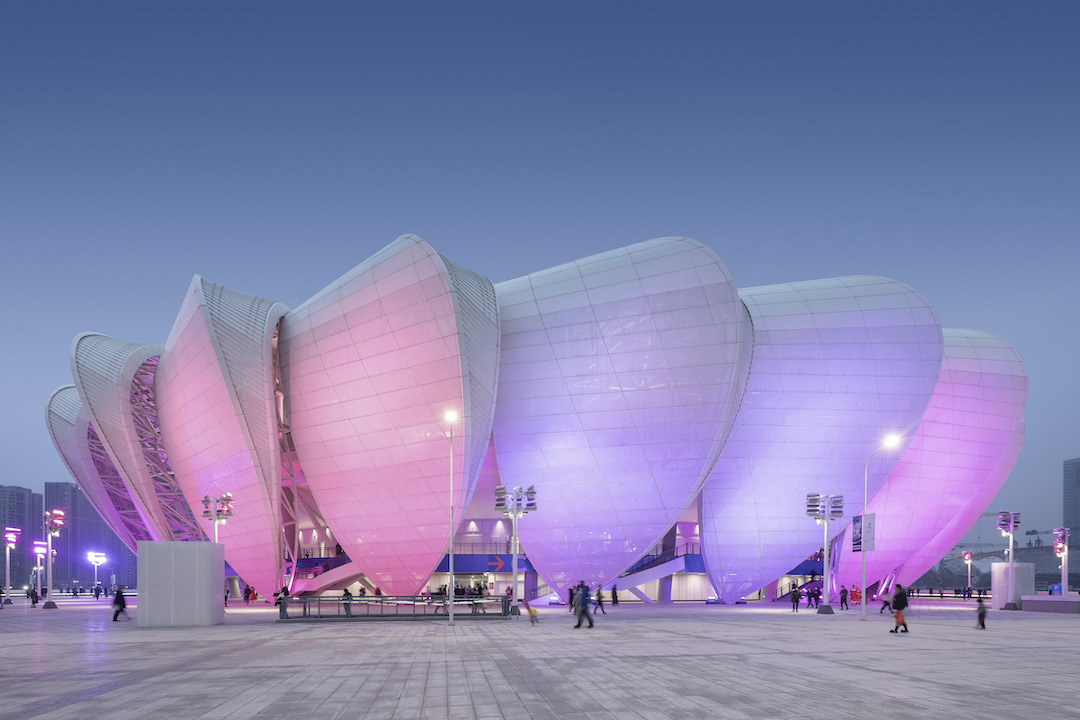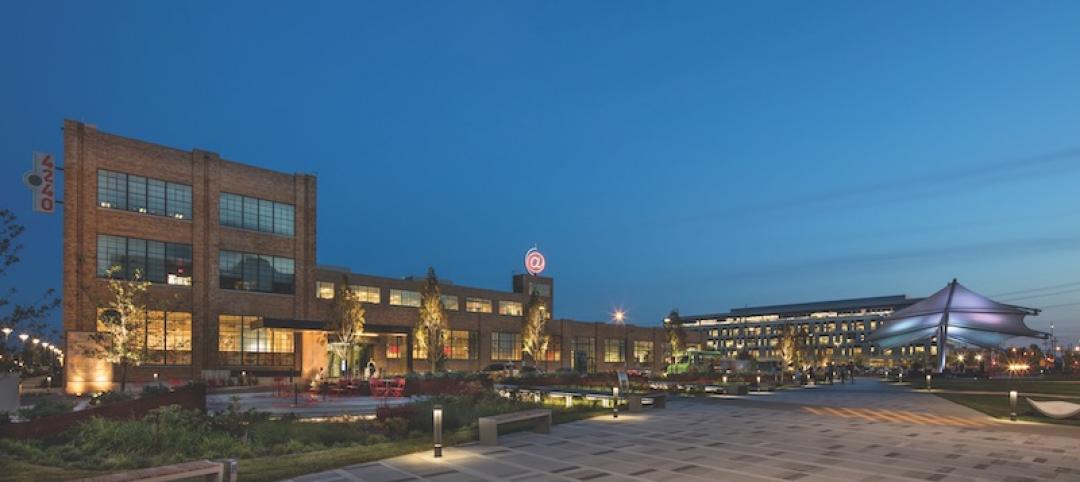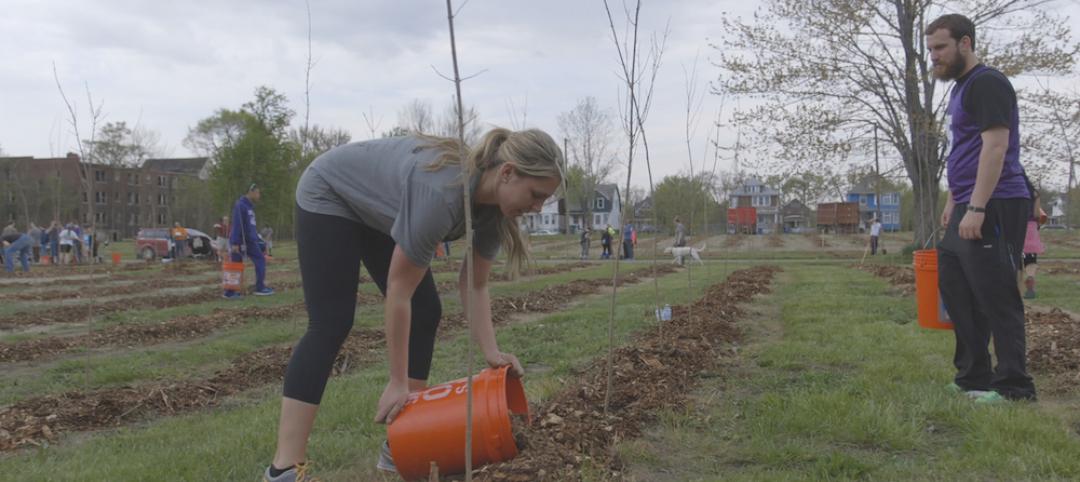In early February 2020, the city of Bellevue, Wash., made accessible renderings of Bellevue 600, a 43-story office tower that Amazon is building on a site that the ecommerce giant purchased in April 2019. Construction of this 600-foot-tall, 885,000-sf tower is scheduled to begin next year, and should be accepting occupants by 2024.
Embedded early in that project was NBBJ’s Design Performance Group (DPG), which the Seattle-based architectural firm created a year ago. The goal of this group is to transform buildings into “open source platforms” for the purpose of connecting design with improvements in occupants’ cognitive powers, productivity, and health.
The consulting team is now up to 25 people, and includes experts in building physics, architectural design, and engineering. “Since our launch, the DPG has had instantaneously traction with our clients,” says Steve McConnell, LEED AP, NCARB, RA, Managing Partner at NBBJ.
The group is also branching out with a series of digital tools, developed by its computational expert Nate Holland, which include the rollout of a daylighting analytical tool that can be used by non-experts. McConnell says other tools will soon be available to analyze acoustics and people movement and interaction; many of the tools will be predictive. “We’re bringing computational tools to the masses,” he says.
Lots of AEC firms talk about the importance of getting teams involved as early as possible on projects. To explain what makes the DPG different, McConnell conjures up a hypothetical academic medical center project, where NBBJ would now embed its experts with a conceptual design team to create a “frictionless” discussion with clients. “Before, all of these decisions would have been made by architects first,” says McConnell.
 The 80,000-seat Hangzhou Sports Park Stadium in China. Photo: Shao Feng.
The 80,000-seat Hangzhou Sports Park Stadium in China. Photo: Shao Feng.
Peter Alspach, NBBJ’s Director of Design Performance, says that he joined NBBJ, from Arup, because, “I wanted to get in at the onset to make early decisions.”
Because the DPG is still relatively small, it selected a “Green 15” number of buildings to work on initially. The projects were chosen because of their size and the environmental impact they could make. These include large healthcare projects, biotech and biomedical buildings, and corporate office towers.
One such project, whose construction is nearing completion, is the 80,000-seat-capacity Hangzhou Stadium in China, located on a 400,000-sm site on the Qian Tang riverfront, opposite the city’s new Central Business District. In partnership with CCDI, NBBJ designed this sports park (which includes a 10,000-seat tennis center) with computational analysis. Its Design Performance Group leveraged advanced parametric scripts and modeling techniques to develop and optimize the stadium’s exterior shell.
 Early analysis by DPG helped reduce the amount of steel needed for the shell of Hangzhou Sports Park Stadium to one-third of what a structure this size would normally require. Algorithmic scripts were also applied to every seat in the stadium to maximize fan views and comfort. Photo: Shao Feng.
Early analysis by DPG helped reduce the amount of steel needed for the shell of Hangzhou Sports Park Stadium to one-third of what a structure this size would normally require. Algorithmic scripts were also applied to every seat in the stadium to maximize fan views and comfort. Photo: Shao Feng.
Design changes for this project could be made within an extremely short turnaround period. The close communication among building team members enabled the design team to ensure quality control and find further optimization opportunities. Early analysis helped reduce the amount of steel needed to one-third of what a stadium this size would normally require. Algorithmic scripts were also applied to every seat in the stadium to maximize fan views and comfort.
Amazon already had set pretty aggressive performance goals for Bellevue 600, says Alspach. Where his DPG entered the picture early was in the building’s façade design to set performance targets and to help the design and building teams recognize solutions for such things as daylighting and passive ventilation.
The group was also involved in improving performance that is related to energy efficiency, carbon management, and human productivity (much of these analyses were accomplished through modeling). Alspach says the “human experience” drove the façade design that is consistent from the top of the building to its base, “despite varying solar exposures,” he explains. Design decisions were “automated” into a set of rules that didn’t impact the project’s cost or scheduling. “Standardization is a big plus for construction,” he says.
This tower and a second 33-story office building to be constructed on the same site will add 15,000 jobs to this metro.
McConnell says that NBBJ’s strategy is to scale the DPG as its work increases. The group will also set standards for the entire firm, including the development of an Applied Science tool kit.
 On the 600 Bellevue tower for Amazon, DPG set performance targets for the building’s façade design to help the design and construction teams recognize solutions for such things as daylighting and passive ventilation. Courtesy NBBJ.
On the 600 Bellevue tower for Amazon, DPG set performance targets for the building’s façade design to help the design and construction teams recognize solutions for such things as daylighting and passive ventilation. Courtesy NBBJ.
The creation of NBBJ’s Design Performance Group builds upon other initiatives that connect design to organizational and environmental impact. These include the firm’s 2030 Commitment to designing carbon-neutral buildings, the formation of a health research partnership with the University of Washington’s College of Built Environments (CBE), NBBJ’s Applied Research Fellowship program—now in its fifth year—and the incubation of virtual reality productivity company Visual Vocal.
On January 16, NBBJ announced that it would donate $250,000 to the CBE. “Connecting the knowledge loop between practices and academy is key toward ensuring our buildings foster and nurture human health,” says Renée Chang, FAIA, Dean of the CBE. McConnell adds that this multiyear partnership would anchor research more deeply to project work, and be shared more broadly across competitive boundaries.
“We’re striving to be leaders,” says McConnell. “We think we’re changing the game to pursue the front end of achieving beauty and performance.
Related Stories
Movers+Shapers | Apr 17, 2019
Sports teams get in the game: Mixed-use developments are using sports stadiums as their anchors
A massive mixed-use neighborhood under way in Los Angeles sets a new bar for sports-anchored development.
Movers+Shapers | Mar 19, 2018
Movers + Shapers: Tech takeover
From Chicago to Charlotte, the tech boom is transforming urban real estate markets and redefining workplace design.
Movers+Shapers | Mar 14, 2018
Movers + Shapers: Lean and Mean
For more than two decades, the Lean Construction Institute has been championing the efforts of a growing contingent of design and construction firms committed to the mantra of ‘continuous improvement.’
Movers+Shapers | Mar 13, 2018
Movers + Shapers: Automating building design
Aditazz asks why a building’s design can’t be automated the same way computer chips are made.
Movers+Shapers | Mar 13, 2018
Movers + Shapers: VR's next shift
A Stanford University startup is taking the VR industry by storm through virtual performance training and human behavioral study.
Movers+Shapers | Mar 12, 2018
Movers + Shapers: Monetizing R&D
Thornton Tomasetti’s CORE studio generates ideas that lead to product spinoffs.
Movers+Shapers | May 10, 2017
BD+C's 2017 Movers + Shapers
A $5.5 billion investment to creat America's coolest city, Studio Gang's moment in the sun, and a creator of 'knowledge communities' make up BD+C's 2017 Movers + Shapers.
Movers+Shapers | May 8, 2017
Movers + Shapers: Charm City's lucky charm
Under Armour’s Kevin Plank launches a $5.5 billion redevelopment to transform Baltimore into “the coolest city in America.”
Movers+Shapers | Jun 17, 2016
Hantz Woodlands brings thousands of trees to hard-pressed Detroit neighborhoods
One of the city's richest residents, John Hantz, is buying hundreds of acres of vacant property, tearing down dilapidated structures, and planting trees in the space.
Movers+Shapers | Jun 17, 2016
REAL ESTATE ARTIST: Theaster Gates works to revitalize African-American neighborhoods
The award-winning Chicago artist renovates properties into studios, libraries, and spaces that commemorate art and black culture.
















